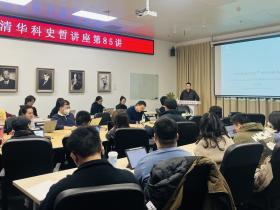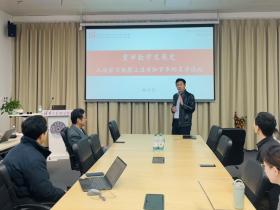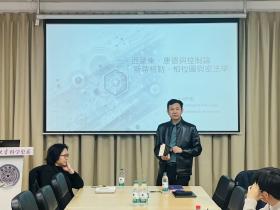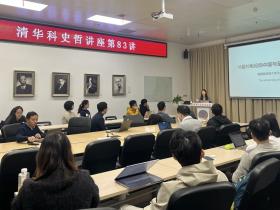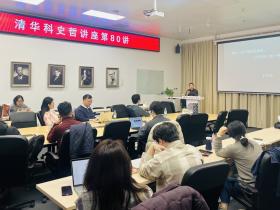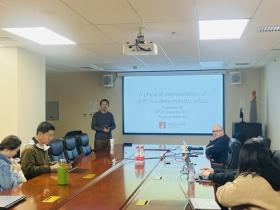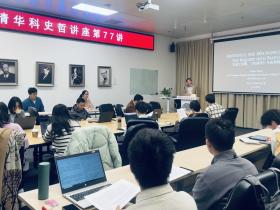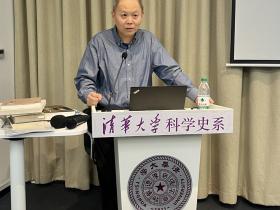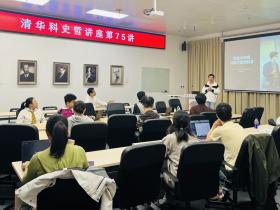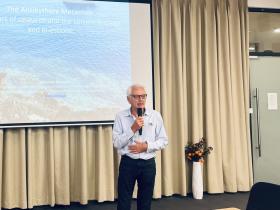On November 9, 2024, Tsinghua University’s Department of the History of Science hosted the 79th session of the THU History and Philosophy of Science Lecture Series in Room B206 of the Humanities Building. Chaired by Associate Professor Jiang Che, the lecture featured Associate Professor Shen Yubin speaking on "‘No More Locust Plagues Under Heaven’—Knowledge, Techniques, and Imagery in Agricultural Texts on Locust Control."
First, Professor Jiang Che introduced Shen Yubin. Professor Shen holds a B.A. and M.A. from Nanjing University and a Ph.D. from Georgetown University, USA. He previously received the Jing Brand Scholarship at the Needham Research Institute, Cambridge, UK, and as a Postdoctoral Fellow at the Max Planck Institute for the History of Science, Germany. Currently an Associate Professor at Tsinghua, his research and teaching focus on the history of science, medicine, and environment in modern China, global history, multispecies histories of human-animal-plant-microbe interactions, and knowledge/practices related to pest control in agricultural texts.
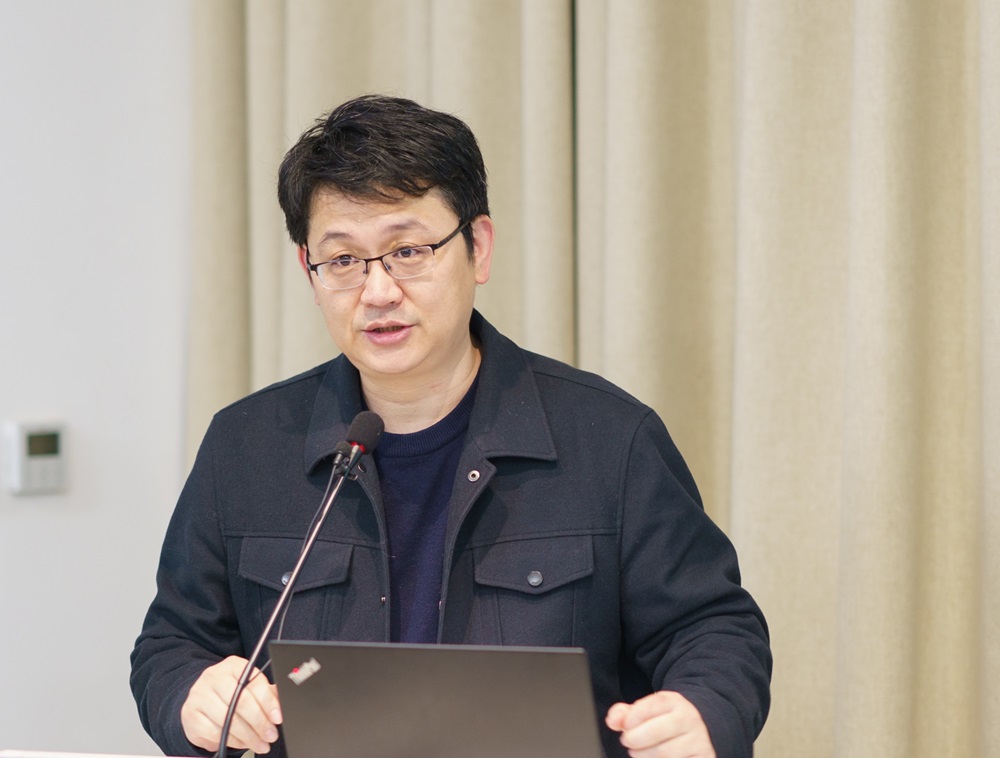
At the lecture’s outset, Professor Shen introduced the biology of migratory locusts and the general historical context of locust plagues and their control in ancient China. Migratory locusts are not a single species; those causing plagues in ancient China mainly included the Oriental migratory locust (Locusta migratoria manilensis), Asiatic migratory locust (Locusta migratoria migratoria), and Tibetan migratory locust (Locusta migratoria tibetensis). A key biological feature is their phase change upon aggregation, transforming into high-density gregarious swarms that devastate agriculture. Historical records document over 1,000 locust plagues across two millennia. Xu Guangqi of the Ming Dynasty identified floods, droughts, and locust plagues as the three major disasters.
Historically, ancient people compiled agricultural knowledge and practices into numerous agricultural texts (nongshu), which serve as primary sources for agricultural history. Professor Shen highlighted three key texts on locust control: Li Yuan’s Pest-Extermination Illustrated Manual (Zhi Huang Tuce, Qing Dynasty), Chen Shiyuan’s Manual for Locust Control (Zhi Huang Chuanxilu, Qing Dynasty), and Exterminating Locusts Record (Jokōroku, Edo-period Japan).
Before the Qing Dynasty, multiple texts documented locust plagues and countermeasures. Dong Wei’s Book for Relief Famine and Saving Lives (Jiuhuang Huominshu, Southern Song) is the earliest extant source on locust control, introducing methods like beating locusts and pit-burying. Xu Guangqi’s On Eliminating Locusts (Chu Huang Di San) detailed locust life cycles, proposing—incorrectly—that locusts hatched from fish eggs (fish eggs become fish/shrimp in wet conditions and locusts in drought). Xu’s knowledge directly influenced later authors like Li Yuan.
During the Qing Dynasty, over 25 types of locust-control texts emerged, mostly compiled by local officials. Four included original illustrations (not copied from one another). Li Yuan’s Pest-Extermination Illustrated Manual (Bu Huang Tuce), now a national cultural relic, drew on Xu Guangqi’s work for locust biology. Its images depicted methods like tilling soil to bury locust eggs, capturing flying swarms, and releasing ducks to devour locusts—the duck method appearing here for the first time historically. The manual outlined stage-specific control strategies combining mass human mobilization and tools, targeting local officials responsible for locust management, not individual farmers.
In 1776, Fujian native Chen Shiyuan compiled Manual for Locust Control (Zhi Huang Chuanxilu), detailing duck-based locust control. His ancestor Chen Jinglun traveled widely, teaching sweet potato cultivation (introduced from the Americas). Observing egrets eating locust larvae, Chen discovered ducks were more effective. Thus, planting potatoes, controlling locusts, and raising ducks became a family tradition. Chen Shiyuan’s cousin Chen Jiuzhen successfully implemented duck control in Wuhu, prompting the manual’s publication. Chen emphasized weather prediction and targeted resource mobilization aligned with locust life cycles. Techniques included incubating ducks with firepans, digging canals for environmental intervention (preventing locust hatching while enabling ducks to hunt). Though multi-originated in ancient China, Chen’s work offers the most comprehensive duck-method record—still used today.
In Edo-period Japan, locust plagues also threatened agriculture. Ōkura Nagatsune’s Exterminating Locusts Record (Jokōroku) illustrated unique practices like whale-oil extermination. With Kyushu’s whaling industry flourishing, people found locusts died quickly in oil—whale oil being most effective. Thus, Edo Japan developed whale-oil spraying as a distinct method. The text also depicted farmers performing locust-sending rituals (sōkō shiki), blending natural and supernatural approaches.
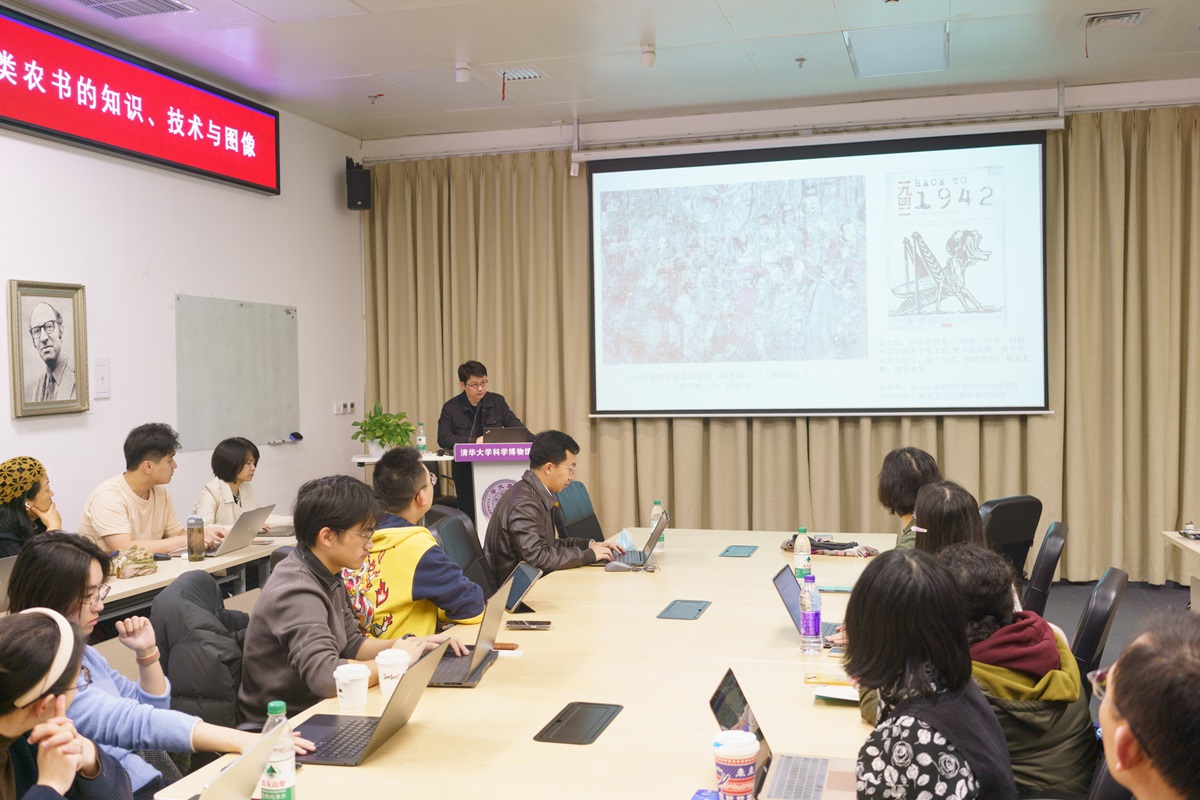
In conclusion, Professor Shen stated that locust-control knowledge in texts like Pest-Extermination Illustrated Manual, Manual for Locust Control, and Exterminating Locusts Record reflects ancient farmers’ wisdom, human-nature interactions, and deep understanding of ecosystem complexity. Modern agriculture emphasizes biodiversity and resource recycling; ancient methods’ use of biological resources aligns with ecological farming principles, offering valuable insights for sustainable development today.
During Q&A, faculty and students discussed whale oil’s biological mechanisms, duck-method prevalence, and causal links between locust problems and agricultural environmental modification.
Documented by: Wang Zhiyong
Photography: Sun Deli
Reviewed by: Shen Yubin


